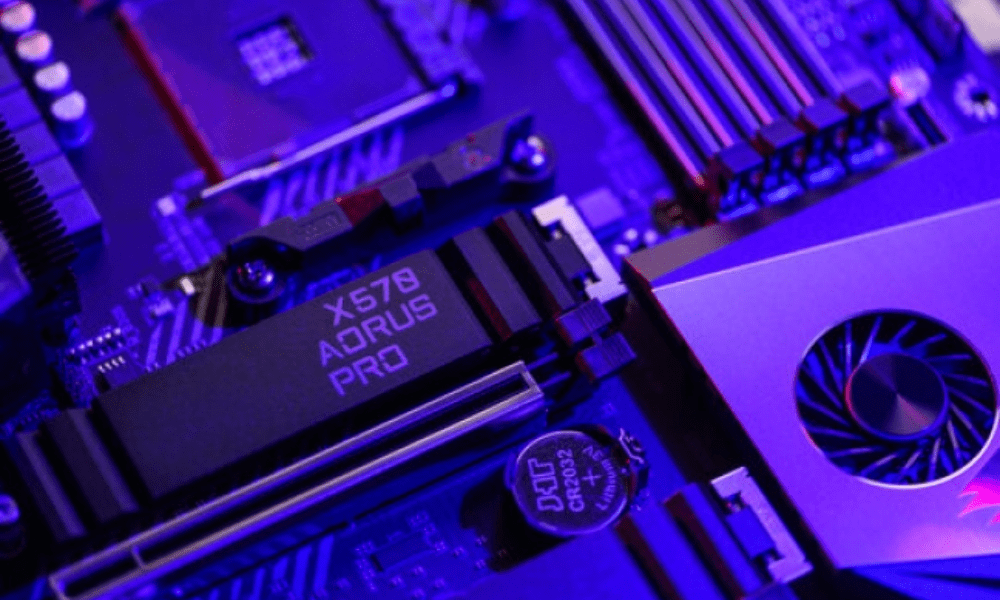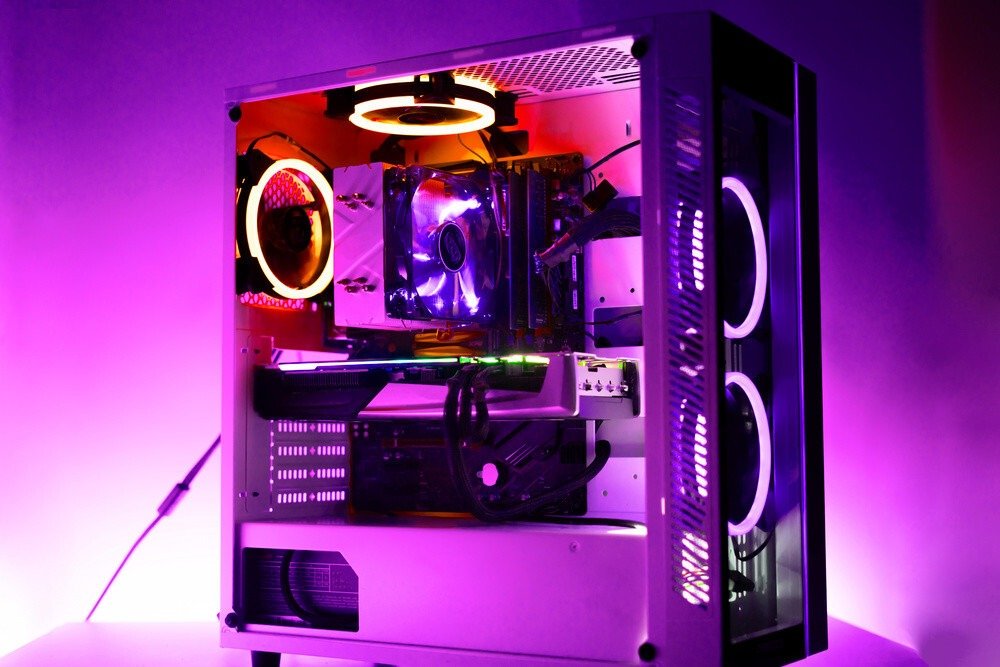Choosing the right case for your PC is an important decision that can affect the performance, usability, and aesthetics of your system. A case that's too small can limit your future upgrade options and restrict airflow, while a case that's too large can take up unnecessary space on your desk and be more expensive.
In this article, we'll walk you through the steps to choose a PC case that's the right size for your needs. We'll provide you with simplified technical details, tips for optimizing space and information on the latest models available on the market.
Determining Your Motherboard Size: The Crucial Starting Point
Choosing a suitable PC case involves understanding the different sizes of motherboards available and their compatibility with your setup.
The three motherboard formats:

1.1. ATX (Advanced Technology Extended):
- The most popular form factor, providing generous space for components and ports.
- Ideal for standard configurations and users considering future upgrades.
- Provides increased flexibility for installing large graphics cards and high-performance cooling systems.
1.2. Micro ATX (µATX):
- A more compact format than ATX, perfect for space-saving configurations.
- Retains most of the functionality of the ATX in a small space.
- Perfect for mounting in micro-tower or mini-tower cases.
1.3. Mini ITX (Miniature Information Technology eXtended):
- The smallest format, ideal for mini-PCs and HTPC (Home Theater PC) systems.
- Offers a minimalist solution for configurations based on space-saving components.
- Requires careful component selection to ensure compatibility and performance.
Choosing the Right Motherboard Size

- Take into account the size of your current motherboard. If you're upgrading, make sure the new case is compatible with your existing motherboard form factor.
- Consider your future needs. If you plan to add graphics cards or large components, opt for an ATX or micro ATX form factor for more space.
- Think about aesthetics. ATX cases are generally bulkier, while micro ATX and mini ITX offer a more compact design.
Summary table of motherboard formats:
| Format | Dimensions (mm) | Description |
|---|---|---|
| ATX | 305x244 | Standard format, ideal for complete configurations. |
| Micro ATX | 244x244 | Compact size, perfect for space-saving setups. |
| Mini ITX | 170 x 170 | Minimalist format, ideal for mini-PCs and HTPCs. |
2. Measuring your components: a crucial exercise for a harmonious configuration

After determining the size of your motherboard, the next step is to carefully measure your other components to ensure perfect compatibility with the case you choose.
2.1. The processor :
- Measure the length and width of the processor, taking into account its socket (the area where it connects to the motherboard).
- Make sure the case has enough space around the socket to accommodate the CPU cooler you want to use.
2.2 The graphics card:
- Measure the length and width of the graphics card, taking into account its power supply and video output connectors.
- Verify that the case has a PCI Express slot long enough to accommodate the graphics card without being obstructed by other components.
2.3. The CPU cooler:

- Measure the height of the CPU cooler, taking into account its fan and heatsink.
- Make sure the case has enough space between the top of the motherboard and the top panel to accommodate the cooler without impeding airflow.
2.4. Hard drives and SSDs:
- Measure the dimensions of the hard drives and SSDs you want to install.
- Verify that the enclosure has enough mounting bays to accommodate all of your hard drives and SSDs without overcrowding.
2.5. The electrical power supply :
- Measure the dimensions of the electrical power supply (PSU) you wish to use.
- Make sure the case has a dedicated space for the PSU, usually located at the bottom or top of the case.
In summary, taking the time to measure your components allows you to select a PC case that provides adequate space for a smooth installation and optimal airflow, ensuring optimal performance and long-term reliability of your system.
Be sure to check the specifications of the components you plan to install for accurate dimensions.
3. Consider Cooling: Good airflow is essential to keeping your system cool
Cooling is another important aspect to consider when choosing case size. Smaller cases provide less space for bulky cooling solutions. This can cause thermal throttling in certain circumstances. The actual cooling capacity is highly dependent on the design of the components used and the cooling system.
Open cooling systems require a case with good airflow, while self-controlled cooling systems, such as blower graphics cards, are less dependent on case size. Liquid cooling systems provide additional flexibility because they can channel heat directly to radiators outside the case, allowing for smaller cases.
See also: How to Reduce Fan Noise in Your PC Case
Think Aesthetics: Express Your Personality Through Your PC

The choice of a PC case is not limited only to its functional aspects. It is also an opportunity to assert your style and personality by selecting a design that inspires you and fits perfectly into your environment.
A wide range of styles to explore:
- Minimalist: Clean lines and simple design for a modern, sleek look, ideal for contemporary interiors.
- Gamer: Aggressive angles and RGB LEDs for a bold, futuristic look, perfect for gamers and computer enthusiasts.
- Industrial: Raw and exposed materials for a vintage and robust look, ideal for lovers of loft or workshop style.
- Modular: Customizable panels and cooling options for a unique setup that reflects your creativity.
A color palette for all tastes:
From classic black to trendy pastel tones, metallic finishes and original designs, PC cases come in a multitude of colors to match your decor and express your preferences.
Tips for choosing the right style and color:

- Consider your decor: A minimalist enclosure can fit seamlessly into a modern interior, while an industrial enclosure will bring a touch of character to a loft style.
- Express your personality: Opt for a bold, colorful design if you want to assert your unique style, or choose an understated, sleek case for a discreet setup.
- Don't forget the lighting: If you're using RGB LEDs, make sure the color and intensity match the desired ambiance.
Tips for optimizing space
- If you have limited space, consider a mini-tower or micro-ATX case.
- Choose an enclosure with multiple drive bays for your hard drives and SSDs.
- Opt for a low-profile CPU cooler if you have limited height space.
- Take advantage of cable managers to keep your system organized and neat.
Popular models of PC cases
Here are some popular PC case models available in the market in 2024:
- NZXT H510i: A stylish and affordable ATX case with excellent airflow.
- Fractal Design Meshify C: Another great choice for an ATX case, with a minimalist design and a mesh side panel for better airflow.
- Lian Li O11 Dynamic Mini: A compact and stylish mini-ITX case, perfect for small setups.







